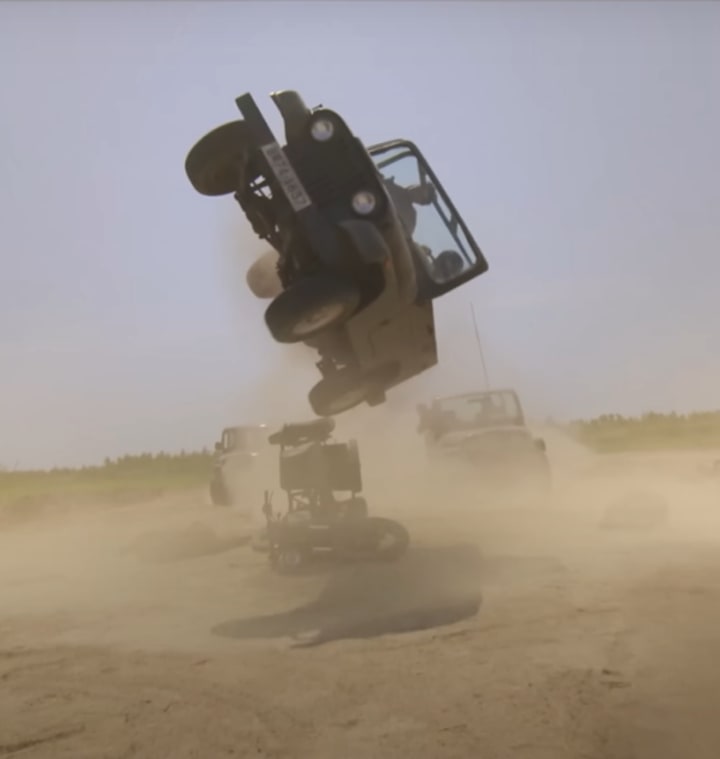Netflix's Carter - A movie review
The streamer's newest action piece features Joo Won as the lead.
Netflix has delivered numerous stylish, activity filled verbose series this year, including Us all Are Dead and Cash Heist: Korea. Be that as it may, its next large activity piece is a film, Carter, which stars Joo Won in the main job. The typically well put together heart breaker picture of Joo Won goes through a frightening change here into the rough, miscreant like Carter (the namesake of the film's title). Carter is coordinated by Jung Byung-gil, who has made his profession out of his adapted, super charged activity course in films like The Villainess (2017) and Admission of Homicide (2012).

Watchers who are searching for a strong activity film will track down a lot of rushes in the enrapturing, smoothly altered Carter, where its activity groupings are completely woven together to give the film a "one take" impact. There are staggering flying perspectives on housetop battles and cascade get away, close by spine-shivering pursues through faintly lit enormous rooms — with the undeniably natural setting of strain among North and South Korea tossed in. What Carter decides to achieve in real life, movement, and set plan, it pulls off with extraordinary assurance.
Nonetheless, those searching for a more person driven story or who have a lower capacity to bear long, elaborate activity groupings could find Carter's 132-minute runtime all in all too overwhelmingCarter starts with a work weighty presentation, taking note of that the Korean landmass is wrestling with a critical irresistible flare-up of the "DMZ infection." The viral disease makes "creature like ways of behaving" and increments fierce propensities in the contaminated. Pioneers from North and South Korea are cooperating to make a neutralizer treatment utilizing the blood of Specialist Jung's girl, named Ha-na, who was restored of the DMZ infection disease through her dad's exploration. Notwithstanding, Specialist Jung (Jung Jae-youthful) and Ha-na (Kim Bo-min) disappear during an exchange game plan to North Korea, where the specialist should facilitate his exploration and efficiently manufacture a remedy for the infection at the Sinuiju Compound Weapons Establishment. There, hordes of tainted North Korean patients are likewise isolated. In the mean time, Carter awakens and finds a baffling voice giving him guidelines through an earpiece. He must choose the option to finish the mission as he has a deadly bomb implanted in his mouth.
The DMZ infection episode happens just a brief time after a truce among North and South Korea, with the cease-fire in fragile equilibrium in the midst of doubt on the two sides over the messed up move of Specialist Jung and Ha-na. The international background and wellbeing emergency give the important story stakes in the midst of the film's relentless hurricane of activity. There is likewise an entire cast of interesting characters: unfamiliar contacts, North Korean Specialists' Party individuals, military pioneers, knowledge specialists, irresistible sickness specialists, and youngsters. Tragically, every one of them is just delicately utilized (except for youthful Ha-na); they exit as fast as they enter, passing on watchers to lament the botched chances to develop the film's narrating and character bends.
There is an intense sense in Carter that the activity will continuously outweigh character improvement or very much created profound turns. The film likewise has a lot of violence, which feels drawn out or even reveled by the "a single shot" style of the film. At a few places in Carter, watchers might battle to track down replies to a few basic inquiries in the consecrated specialty of making a story: what is right now driving the story's hero, Carter, to take on such a lopsided measure of chance? On the opposite side, what are the explanations for the main adversary's choices? Generally, what is the inspiration driving the activity of each person?
One of the greatest ideas of Carter is the "single take" style that it was shot in. While the film is truly comprised of a few shots, the general impact works. As the film energetically moves from a public bathhouse to a transport, distribution center, clinical office, garments shop, and plane, just to give some examples, the "single take" style provides Carter with a sensation of limitlessness in space that couple of activity films have had the option to accomplish. The camera enthusiastically pursues the similarly enterprising Carter through the actual space, caught together in the mayhem and vulnerability. There is neither respite presented by an elective point nor additional information acquired through a laying out shot; the foe can rise up out of any direction.Several groupings are a victory of filmmaking, especially those including vehicles taking off through a confounding cluster of backgrounds: a motorbike pursue scene through labyrinthian roads and rear entryways, a plane deadlock that changes into a skydiving battle scene (which was shot with the entertainers truly skydiving) and a battle succession including trucks and jeeps speeding through a rural scene. Successions are strung together almost easily — a distinct difference to the inconceivably work escalated work and arranging that went into making Carter. On occasion, the film feels like one monster, tangled get away from room game. There is maybe an irritating inquiry here of whether Carter's realistic achievements are squandered on the little screens that Netflix's crowds will experience the film, as all the work may not completely mean home survey.

It is as of now of the film that Carter truly dives into the meatier issues and fosters a surprising close to home gravity. There is the subject of connection — the family we are naturally introduced to and the "family" we find — and how obligations of obligation and care consider along with these connections. The film likewise brings up issues about personality and the data battle through Carter's deficiency of memory. The inescapability of innovation — the film takes this in a real sense, through the implanted gadgets in Carter's body — resounds with significance. Similarly as Carter wrestles with attempting to sort out his character through the unending convergence of instant messages as well as data given by an unremarkable voice, innovation has likewise unfortunately turned into a significant power in deciding information about ourselves and the world.
These are intriguing inquiries raised via Carter. Be that as it may, watchers might wind up digging great underneath the film's blasts and pursue scenes to track down them.
About the Creator
Enjoyed the story? Support the Creator.
Subscribe for free to receive all their stories in your feed. You could also pledge your support or give them a one-off tip, letting them know you appreciate their work.






Comments
There are no comments for this story
Be the first to respond and start the conversation.